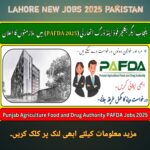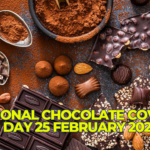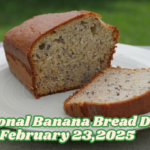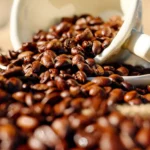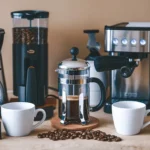For some, entering the world of coffee is synonymous with learning a new language: espresso, macchiato, single-origin, and cold brew.
When these unfamiliar words float around cafés and brewing guides, newcomers often feel more confused than caffeinated. If you ever looked at a coffee shop menu or scrolled through a brewing tutorial and thought, What does any of this even mean?-join the crowd.
Understanding coffee jargon does not mean you will sound sophisticated; it actually opens up several choices regarding what you can brew and enjoy to everyone’s taste.
This guide breaks down terminology to introduce coffee basics to each aspirant, intending to enable him/her to explore the world of coffee with confidence.
Coffee Bean Basics and Their Journey
All coffee starts with a bean, though not all beans are created equal. Let’s start with the essential terminologies around this one on coffee on its source.
1. Arabica vs. Robusta
Arabica and Robusta are the two main types of coffee beans. Arabica beans, which account for 60-70% of global coffee production, retain elegant flavors ranging from fruity and floral to chocolaty and nutty. They thrive at higher altitude locations and are generally viewed as superior.
Robusta beans, on the other hand, develop at lower altitudes; they are hardier plants and contain 1.5-2 times the caffeine levels found in Arabica, giving a stronger mouth feel and flavor that tends to be described as earthy or woody. Robusta is also often used in espresso blends for its crema-promoting qualities and instant coffee.
2. Blends vs. Single-Origin
You will, however, want to make sure you know what blends and single-origin are, with all the knowledge of beans. Blending means mixing beans from two or more farms or regions, bringing together different characteristics that work well together to produce a balanced flavor profile.
This combination, for instance, may see African beans- and these are known to give bright acidity mixed with South American beans, which are valued for their chocolatey notes; the interplay develops complexity.
Single-origin coffee, on the other hand, true to its name-is sourced from one geographic location; this may be a country, a specific region, or even one single farm. Here, the true expression of the terroir-those environmental factors such as soil and climate-have great prominence, thus, especially pleasurable use of distinct flavors is long to experiment with.
3. Roast Levels: Light, Medium, Dark
Roasting is the work that causes the green coffee beans to give rise to the aromatic brown beans that everyone knows. The roast level accounts for an important part of what flavors you find:
- Light roast Beans are roasted the least to preserve the original flavor profile of the bean and its signature acidity. It generally tastes of flowers, fruit, or tea.
- Medium is a compromise between the natural qualities of the bean and aerobic flavors developed as a result of roasting. They have a heavier body than light roasts, with caramel or nutty notes.
- Dark roast beans are roasted until they become oily. Flavors are dominated by roasting and build up towards bold, smoky, or bittersweet profiles. Contrary to common belief, darker roasts tend to have slightly less caffeine than lighter ones due to longer heating times.
Brewing Methods Demystified
It greatly affects the taste and mouthfeel of the coffee. Here is a summary of the various brewing methods and their terminology.
1. Espresso
Espresso is concentrated coffee made by forcing hot water through finely ground coffee beans under heavy pressure. One shot, or about 1 ounce of this intense syrupy drink, should be crowned with a layer of crema-golden and creamy foam. Espresso is the basis for such drinks as lattes, cappuccinos, and macchiatos.
2. Drip Coffee
This is the classic technique in which hot water is poured over filter-packed medium-coarse ground coffee. The water drips into a carafe, giving a clean, mild cup. This genre includes terms like pour-over (manual drip brewing, e.g., Hario V60) and batch brew (automatic drip machines).
3. French Press
Also known as the press pot or plunger pot, this involves steeping coarse grounds in hot water, then pressing a metal filter into hot coffee to separate it. This brew is full-bodied, leaving more oils and sediment than regular drip coffee.
4. Cold Brew
Cold brew involves steeping coarse grounds in cold water for 12 to 24 hours. Slow extraction results in a smooth, low-acid coffee concentrate, usually served over ice or diluted with water or milk. It shouldn’t be confused with iced coffee, which is usually coffee brewed hot and then chilled and poured over ice.
The Coffee Drinks Explained
Walk into a cafe and you’ll find the menu fairly overwhelming. A brief description shows what those drink names really mean:
- Latte: One-shot espresso topped with steamed milk and finished with a thin layer of milk foam. Ratio: about one-third espresso, two-thirds milk.
- Americano: Espresso diluted with hot water to emulate a drip coffee’s strength but with a different flavor profile.
Tasting Terms: How to Describe What You’re Sipping
Palate training for the coffee drinker means one’s ability to describe flavor. Some words specifically used during cuppings and tastings will be provided.
1. Acidity
Do not confuse this with sourness: it is an exciting, tangy quality that livens up the coffee. Think of the zest of a ripe green apple compared with the flatness of an overripe apple. Kenya or Ethiopia coffees are often noted for their bright acidity.
2. Body
This describes either the weight or thickness of the coffee on the tongue. Full-bodied coffee (e.g., French-press) is one with a rich and creamy feel, while light-bodied coffee (e.g., drip) tends to be more tea-like.
3. Aroma
The fragrance given off by coffee; is imparted by various compounds liberated during brewing. Various terms may be used to describe aroma such as floral, citrus, caramel, or toasted. Aroma plays a huge process in determining flavor.
4. Finish
The aftertaste left on your palate. Usually, coffee can be said to have a clean finish, whereby flavor dissipates rather quickly, or it may leave a lingering finish, whereby several notes exist and may resemble dark chocolate or spice.
Putting It All Together
That knowledge of these terms might be the basis for confidently tasting coffee. Take a moment and consider what you like: bold and smoky flavors (dark-roast) or bright and fruity notes (light-roast)? Lattes that are thick and creamy or stout espresso? Visit a local roaster or specialty cafe and ask questions because most baristas take pleasure in sharing their knowledge.
Remember that coffee is a very personal thing. There is no “correct” way to enjoy its taste. Becoming familiar with the language gives you a powerful tool to consciously choose from. Now you’ll never again feel out of place, whether preparing your favorite brew or ordering at a cafe.

